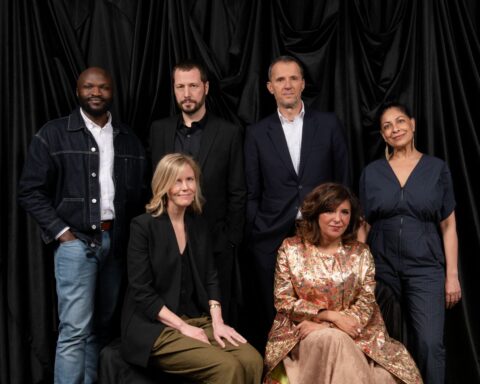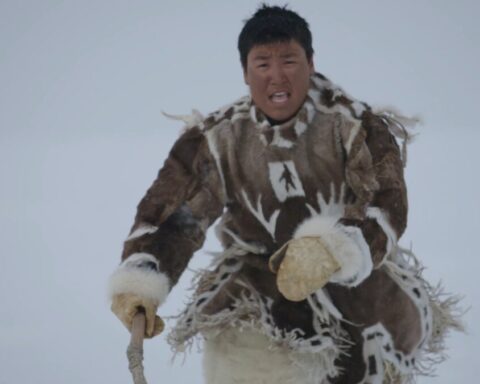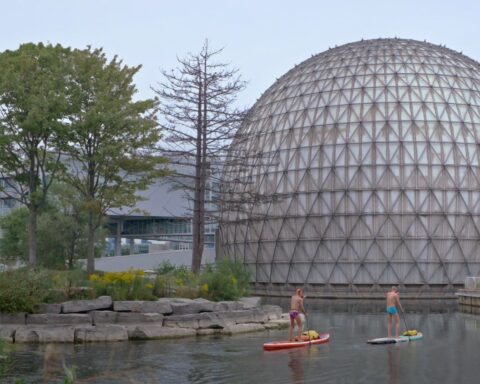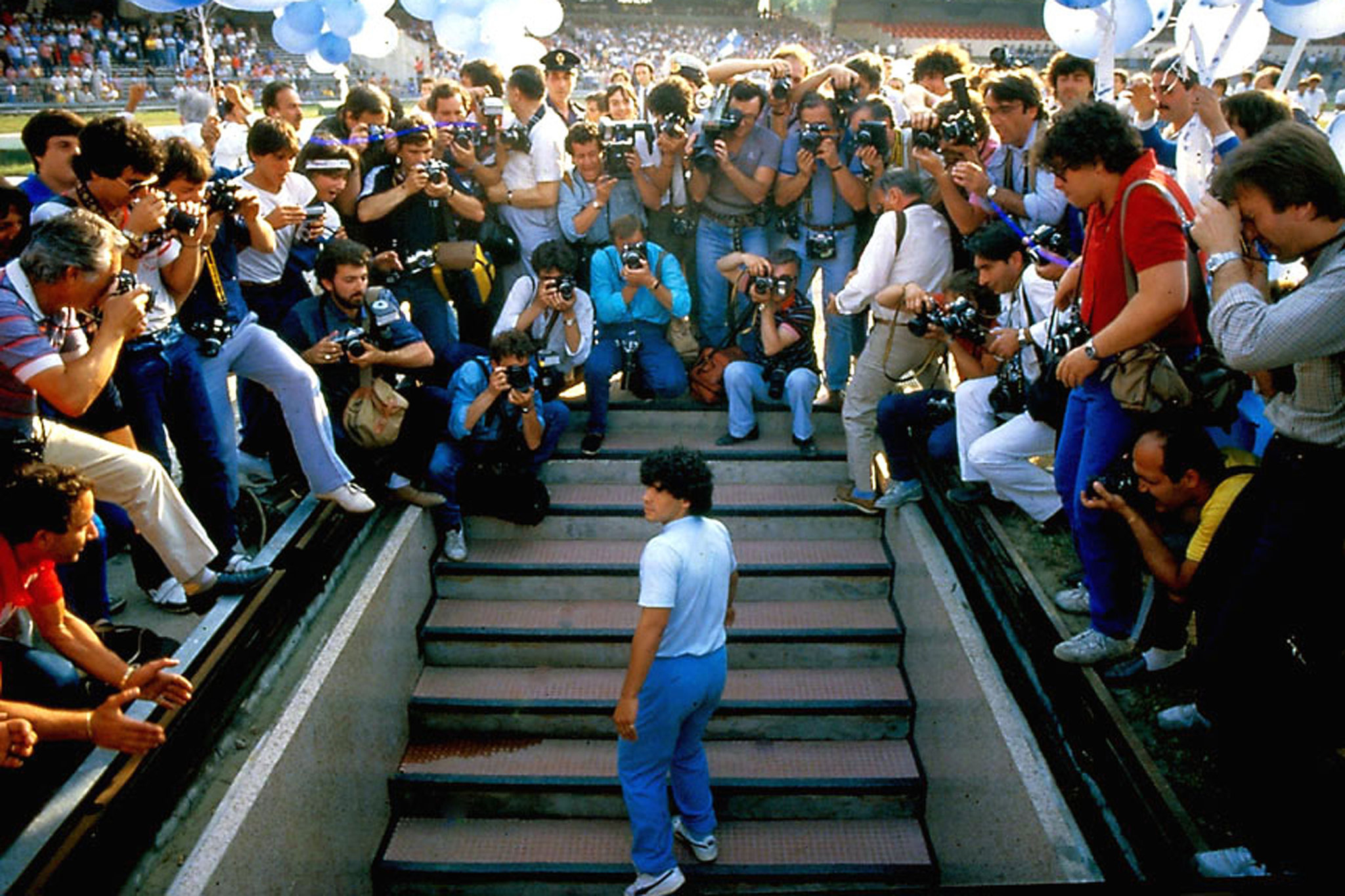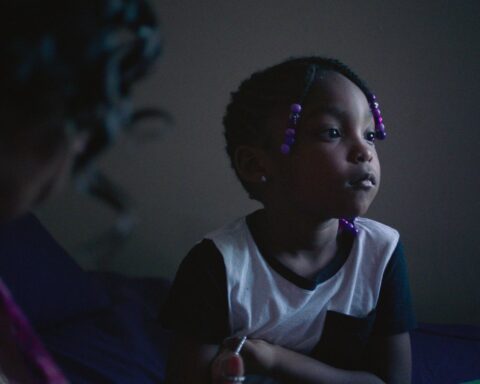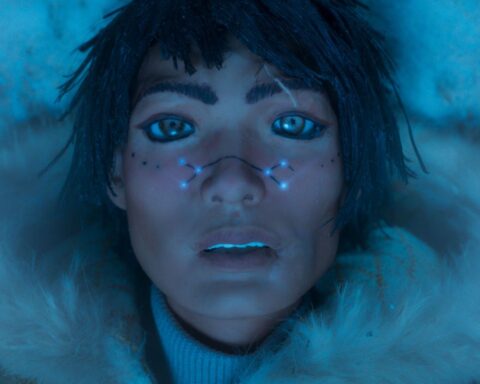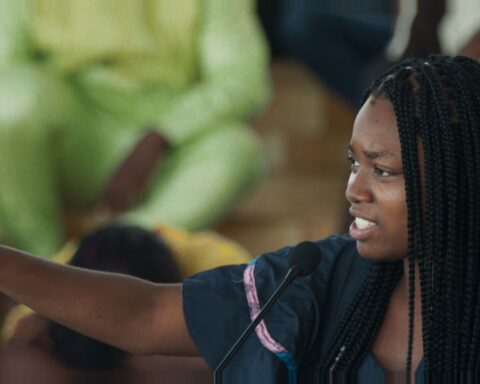Sometimes I get a little tired of film festivals. I know this probably not a good thing to admit, but I have to be honest.
First off there is the onslaught. A veritable deluge of films, overwhelming in number, all clamouring for attention. All of this bounty would be great, if one had the time to take in all the films on offer, thinking about the ideas and images, wandering down tangential sidetracks to find out how blockchain really works or to revisit all of Agnès Varda’s films.
But there is simply not enough time for that.
You have to keep going, racking up the numbers, adding notches to your cinema belt. One film tumbles into another, details and experiences blur together, so that you can’t tell where one films ends and another begins. Occasionally, you lose the thing entirely. There is simply too much content for one tired human brain to take in, process, and store.
Here is where it starts to feel a little depressing. You can’t do it all: see, think, analyse all of this volume, without feeling like you are failing to do some films justice. You have to pick just a few and take the time to allow them to sink in properly, not only so that the connections between ideas become clearer, but also to gain a better sense of the age in which you are alive.
This moment in time. Right Here. Right Now.
In the spirit of mindfulness, instead of plowing through the reams of film that make up the 2019 Vancouver International Film Festival’s (VIFF) documentary programming, I’m going to slow down and take some time. Starting naturally with the first lady of cinema critique, the one and only Pauline Kael.
As Rob Garver’s documentary What She Said: The Art of Pauline Kael makes explicitly clear, no one ever said it quite like Kael. Here she is in all her fearsome barbed intelligence, practically bristling with the stuff, unafraid to take on the power houses of male genius. The woman had a way with words, especially how to turn them into weapons. Armour-piercing rounds, sentences and analysis that could shatter directors into a million tiny pieces. It didn’t matter if it was Orson Welles or Stanley Kubrick, Kael exploded all forms of preciousness and hubris, kicking the living hell out of films that needed deflating. She didn’t always get it right. Operatic outpourings about Last Tango in Paris might leave you scratching your head a little. (In her New Yorker review, she compared the film to Stravinsky’s Rite of Spring.) But when she loved something, she really loved it, A case in point was Bonnie and Clyde, a film that Kael almost singlehandedly rescued from obscurity.
Garver’s film builds upon the wealth of material about the woman including interviews with the people who loved her, as well as the people who wanted to hit her in the back of the head with a shovel. There was another side to Kael, a kinder aspect, that her daughter Gina James attests to, describing Kael, not as a critic, but as a single mother, struggling hard to make a living and raise her kid. It is this version of Kael — fragile, human, and coming from a place of genuinely wanting to help, even if she did it in a way that made filmmakers take to their beds – that remains. She did it her way, all the way.
There is a species of female artists that is instantly recognizable – tough, obsessive, and somehow able to survive things that would destroy the average person. Frida Kahlo, Marina Abramovic, Yayoi Kusama are only a few of these brilliant creators. Fueled by earlier trauma, such women are rocket-powered, making work in the face of poverty, indifference, and the endemic sexism of the art world. Ursula von Rydingsvard is one of them. Born to Ukrainian-Polish parents, von Rydingsvard spent her childhood in a refugee camp, before moving to the U.S. As she recounts, it was her father, violent, abusive and deeply insecure, that forged her desire to become an artist.
Daniel Traub’s Ursula von Rydingsvard: Into Her Own captures the artist at work. Bundled up in breathing apparatus, gloves, and a boiler suit, she resembles an engineer or construction worker more than a sculptor. But the work itself is extraordinary – massive in scale, and intricately constructed of red cedar and bronze, moulded into shapes that defy easy categorization. It is both monumental and intimate, channeling the delicacy of lace, with the brutalist power of metal superstructures. At the age of 77, Ursula von Rydingsvard has rightfully assumed her place as one of the preeminent sculptors in the world.
It’s not an easy life being an artist, male or female. A fact that is made abundantly clear in Werner Herzog’s Nomad: In the Footsteps of Bruce Chatwin. Herzog offers a deeply warm and loving tribute to the writer in the form of a documentary memento mori, traveling to the places that inspired Chatwin’s work including the tip of Patagonia. It was here that Charles Amherst Milward, a cousin of Chatwin’s paternal grandmother discovered the remains of a giant sloth deep inside a cavern. He sent a bit of the sloth’s hide back to the UK, where it made its way to Chatwin’s grandmother’s cabinet of curiosities, erroneously termed the hide of a brontosaurus. Herzog muses that Chatwin’s early obsession with distant places and fabulous stories blossomed from this strange bit of fur and skin. As a young man, Chatwin set off to see the world, perambulating from South America, across Europe, and most famously to Australia, where he set his book The Songlines.
Composed of interviews with Chatwin’s friends, family as well as his biographer Nicholas Shakespeare, the film takes a few curious side trips, including revisiting footage of Herzog’s film Cobra Verde, based on Chatwin’s book The Viceroy of Ouidah. As Herzog describes, Klaus Kinski and hundreds of female warriors in full battle mode made for a somewhat unpredictable film shoot. But Chatwin, who was suffering from full-blown AIDS at the time, was delighted to see the film in action. Despite its wandering nature or maybe because of it, Nomad carries with it an unexpected emotional weight some of which is directly embodied in Chatwin’s own leather rucksack that he bequeathed to Herzog after his death. Although Chatwin’s reputation has come under fire in recent years, Herzog’s film is a poignant reminder of the writer’s outsized gifts for creation, seduction, friendship, and ultimately beauty.
Beauty is also the subject of another artist’s work in Charles Wilkinson’s portrait of renowned Haida carver Robert Davidson. Haida Modern is very pretty film, exquisitely capturing the beauty of Haida Gwaii, where Davidson grew up, as well as the astonishing craft and precision of the artist’s sculpture, prints, and carvings. All of this lushness, often filmed in slow motion, leaves you longing for something a bit harder. Thankfully, there is more flinty stuff, especially in the radical act that effectively launched Davidson’s career.
As Davidson explains in the film, when he moved to Vancouver to finish high school, he discovered the collection of Haida art and objects housed in UBC’s Museum of Anthropology. It proved a revelation. The strength and magnificence of Haida culture, pre-contact, rivaled art traditions around the globe. But when Davidson returned home to the Village of Masset, on Haida Gwaii, nothing remained. Totem poles had been chopped down and burned, and traditional ceremonies such as potlatching had been outlawed. No one even spoke about the old ways, and when Davidson brought it up, he says it actually made people angry.
In this ground zero of cultural obliteration, his decision to carve the first totem pole in almost a century emerged out of a simple desire to give the village elders one last chance to celebrate. With help from his grandparents, aunties and uncles, as well as his younger brother Reg, Davidson began to carve. And on a glorious summer day in August 1969, the pole raising took place. Thousands of people gathered to witness the event, including a film crew from the National Film Board (NFB) who documented the pole raising for a film entitled This Was The Time. In footage from the 1969 documentary, the community comes together, elders in homemade headdresses, made from brown-paper bags, old women dancing with the bright joy of young girls. In the centre of the action is Davidson himself, chanting the ceremony that marked the completion of the project.
Haida filmmaker Chris Auchter repurposed the original NFB footage, along with interviews with Robert Davidson, Reg Davidson and scholar Barbara Wilson into a new documentary short, fittingly titled Now Is The Time. Together the two films make for a singular statement of Davidson’s peerless artistry.
Kenneth J. Harvey’s biography of Canadian icon Mary Pratt, It Was All So Wonderful: The Everyday Magic of Mary Pratt isn’t the most organized film. The narrative jumps forward and backward in time, mixing together Pratt’s early life growing up in Fredericton, her marriage to fellow artist Christopher Pratt, as well as her later emergence as a painter. It’s charming, but also somewhat hectic. A more measured approach, not unlike Pratt’s own work, would have benefitted the story. Still, there is a great deal to be enjoyed here.
As a young wife and mother, Pratt painted the things that were around her, the domestic world of cooking, cleaning and keeping house, transforming mundane objects, like fish, preserves, glasses and plates into things of remarkable beauty. Light and colour were the true subjects of Pratt’s work, and how these two things informed one another, whether it was the ruby glow of red jelly or the iridescent scales of a fish, waiting to be transformed into dinner. As she says, “When I finally get to my studio. I often just burst into tears. In front of my painting, I can be king, I can be queen, I can rule.” Mary Pratt died at the age of 83 in August of 2018, having secured her place in Canadian art history. A queen to the end.
A great many of the documentaries at VIFF are looking backwards, but there are a few boldly facing down the onrushing future. One of these is Alex Winter’s Trust Machine: The Story of Blockchain.
Winter (The Panama Papers) is familiar to most folk as one half of Bill & Ted’s Excellent Adventure and the follow up B&T’s Bogus Journey. There is something of both the excellent and the bogus in Winter’s film Trust Machine.
First the bogus, dudes.
The Internet began its life with utopian ideals of sharing, collaboration and freedom. But it didn’t stay that way for long. Winter is intimately familiar with the darker side of the Internet, having plumped the depths in his previous film Deep Web, which uncovered the story of the Silk Road, the Dread Pirate Roberts, and the nefarious stuff that happened in the inky recesses of the world wide web.
But awesomeness—or excellence—reasserted itself in the form of something called blockchain. Created by a mysterious figure named Satoshi Nakamoto, blockchain was ostensibly a way to reinsert honesty, fairness and community back into the Internet.
The film details not just how blockchain currently functions (primarily as a ledger system for cryptocurrencies like Bitcoin) but also what it could potentially do in the future. Here is where things get genuinely exciting. Whether it’s a micro-grid power system in Brooklyn creating green energy or musicians like Imogen Heap sharing her music directly with her fans, the film asserts that blockchain just might be the next big revolution in how we share and use information.
Is this just all hyperbole? It remains to be seen, but the power to decentralize major systems, like banking, finance, electricity and provide greater resilience, less corruption, freedom and independence sounds pretty damn good right about now.
Part of the pleasure of a festival like VIFF is getting the bigger picture. But staying slow and steady has its own rewards. There’s plenty more films worth delving into including Assholes: A Theory, Jordan River Anderson: The Messenger, My Dads, My Moms and Me, and wonderful shorts like Highway to Heaven.
But here’s one more!
Varda by Agnès is a film to affirm your faith. Varda died on March 29, 2019 from complications from cancer but she left behind an extraordinary body of work–nonfiction and narrative, a glorious outpouring documented in this, her final film. It’s all there, garrulous, tangled up with life, rich, generous, brimming with joie de vivre.
And now, I have to go lie down.




